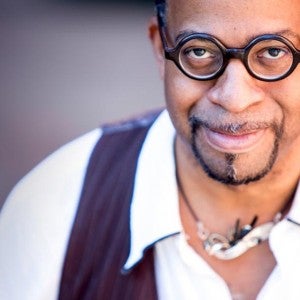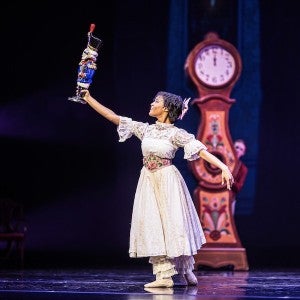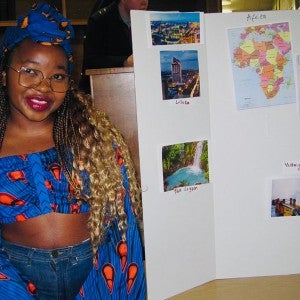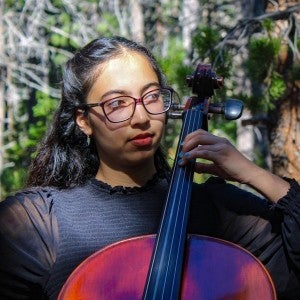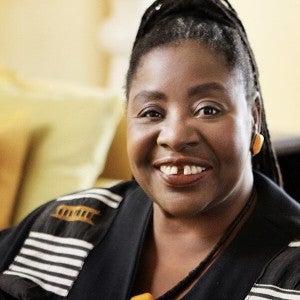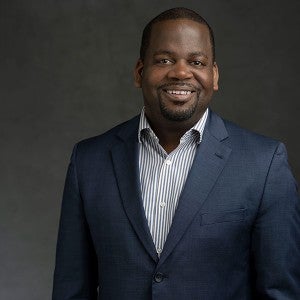Interlochen Online's next session begins May 6—enroll in any course or certificate program now.
A special message from Aretina Hamilton, Associate Director of Diversity, Equity, and Inclusion
If we are shaping the artists of tomorrow and the future, we must acknowledge how our practices as instructors and mentors can make, break, or dismantle students’ identity and expression as artists.
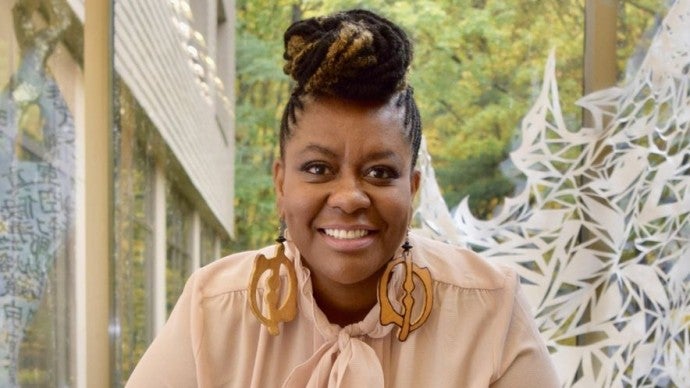
Dr. Aretina Hamilton, Interlochen Center for the Arts Associate Director of Diversity, Equity, and Inclusion.
“If we are going to heal, let it be glorious.” — Warsan Shire
At the 12th Annual Academy Awards, the African-American actress Hattie McDaniels earned an Oscar for Best Supporting Actress, her role as Mammy in Gone with the Wind. As she held the golden statue in her hand, trembling, she delivered the following speech:
Academy of Motion Picture Arts and Sciences, fellow members of the motion picture industry and honored guests: This is one of the happiest moments of my life, and I want to thank each one of you who had a part in selecting me for one of their awards, for your kindness. It has made me feel very, very humble; and I shall always hold it as a beacon for anything that I may be able to do in the future. I sincerely hope I shall always be a credit to my race and to the motion picture industry. My heart is too full to tell you just how I feel, and may I say thank you and God bless you.
For her Hollywood co-stars, the moment was one of glamour and excitement. Yet, I can imagine for Hattie, despite the honor of winning this award, she felt conflicted. She was both within the Hollywood institution and outside of the institution. At the event, due to racial segregationist policies, she wasn’t allowed to sit with her white colleagues. She was relegated to the sidelines. It would be another 51 years before another Black woman, Whoopi Goldberg, won an Oscar for Best Supporting Actress, and another 62 years before a Black woman, Halle Berry, won for Best Actress. These moments of progress are too few and far between.
In the arts, we like to pretend that racism doesn’t exist. By virtue of our passions and art forms, we think we transcend race. While our individual art forms provide a litany of experiences for students to express themselves, I wonder how we might cultivate a community where students can bring their whole selves to the table. We can no longer rely on tokenism or color-blind representations of diversity: it is time for true inclusion. If we are shaping the artists of tomorrow and the future, we must acknowledge how our practices as instructors and mentors can make, break, or dismantle students’ identity and expression as artists.
As we prepare for the upcoming semester and academic year, I encourage you to pause and reflect on the multiple challenges we will be facing. Some of these are related to COVID, and some are related to the racist and violent deaths of Ahmaud Arbery, Breonna Taylor, George Floyd, and so many others. For the past two years, as the Assistant Director of Talent Acquisition, I developed recruitment policies aimed at making Interlochen a more diverse and inclusive working environment. In my new role as the inaugural Associate Director of Diversity, Equity, and Inclusion, I am excited to implement programs, policies, and initiatives that will help transform the culture and community of Interlochen and help us truly embody our mission to promote “world friendship through the universal language of the arts.” As we were reminded during the spring semester, these times are not normal. We are teaching in a pandemic.
And yet, I am hopeful. With the emergence of COVID-19, the veil has been pulled back on xenophobia, socioeconomic disparities and income inequality, anti-Blackness, healthcare access, DACA and the laws affecting undocumented students, young people’s mental health, the emotional labor of parents, educational disparities, digital divides, racial trauma, and food insecurity. These issues have long been with us. The good news is that people are finally waking up to recognize and address them. The first step to change is collectively acknowledging the problem.
I've already begun conversations with members of our faculty and staff and look forward to broadening those discussions with the rest of the Interlochen community. As part of this work, I am also developing a Committee on Inclusive Excellence that will help me identify blind spots and areas of growth within campus life, the arts and academic curriculum, community standards, and other growing edges. In addition, after engaging with alumni, I will commence a series of conversations regarding the experiences of Black, Indigenous, and other alums of color in an effort to build bridges of hope and healing.
With this in mind, I will embrace four key pillars in leading the Diversity, Equity, and Inclusion work at Interlochen: Education; Transparency and Vulnerability; Accountability; and Transformation. These pillars, which have been informed by industry best practices and roundtables with colleagues on our faculty and staff, will serve as a foundation for critical dialogues and deep engagement with topics that are uncomfortable but necessary to develop a culture of belonging on our campus.
